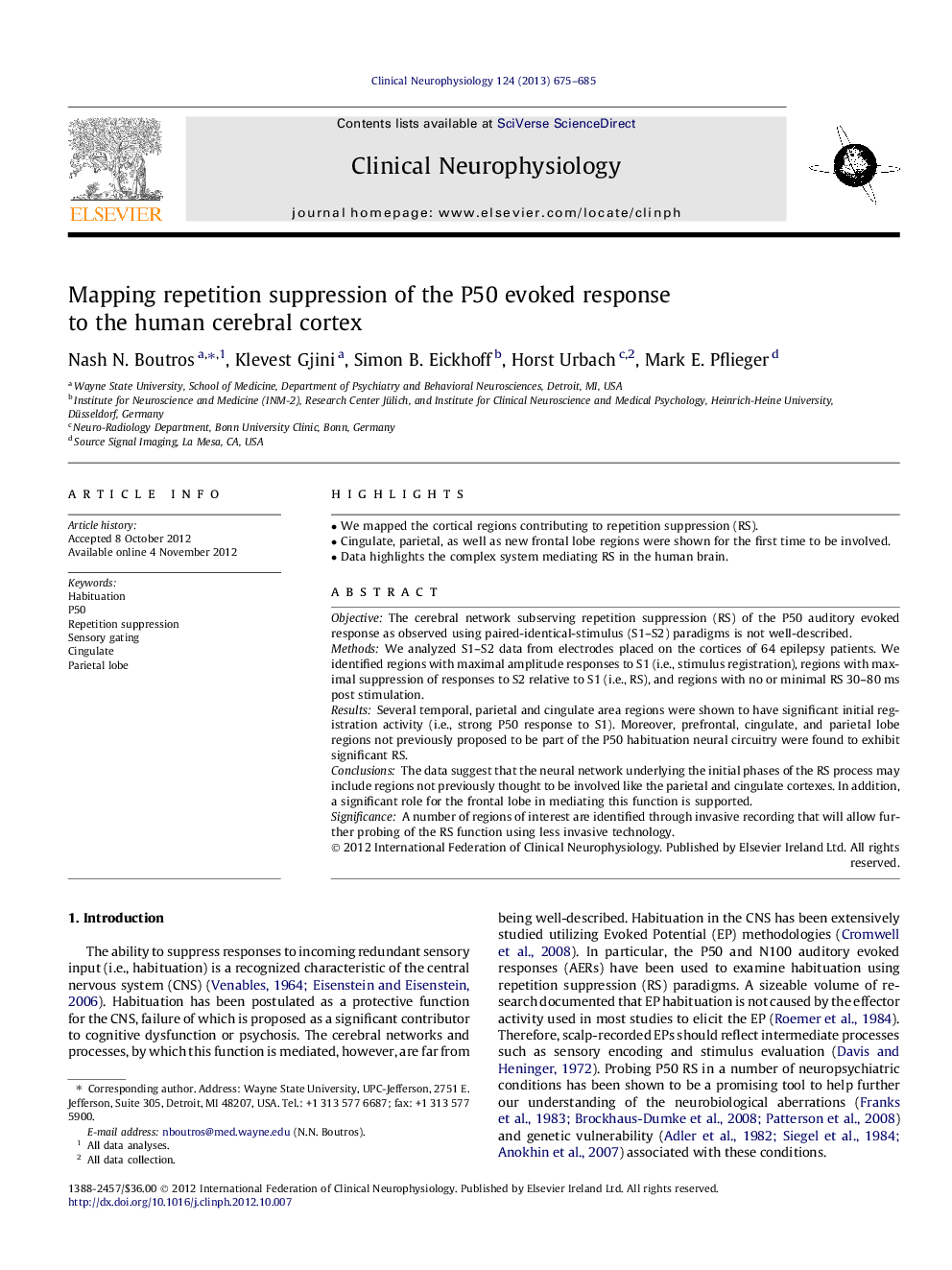| Article ID | Journal | Published Year | Pages | File Type |
|---|---|---|---|---|
| 3044177 | Clinical Neurophysiology | 2013 | 11 Pages |
ObjectiveThe cerebral network subserving repetition suppression (RS) of the P50 auditory evoked response as observed using paired-identical-stimulus (S1–S2) paradigms is not well-described.MethodsWe analyzed S1–S2 data from electrodes placed on the cortices of 64 epilepsy patients. We identified regions with maximal amplitude responses to S1 (i.e., stimulus registration), regions with maximal suppression of responses to S2 relative to S1 (i.e., RS), and regions with no or minimal RS 30–80 ms post stimulation.ResultsSeveral temporal, parietal and cingulate area regions were shown to have significant initial registration activity (i.e., strong P50 response to S1). Moreover, prefrontal, cingulate, and parietal lobe regions not previously proposed to be part of the P50 habituation neural circuitry were found to exhibit significant RS.ConclusionsThe data suggest that the neural network underlying the initial phases of the RS process may include regions not previously thought to be involved like the parietal and cingulate cortexes. In addition, a significant role for the frontal lobe in mediating this function is supported.SignificanceA number of regions of interest are identified through invasive recording that will allow further probing of the RS function using less invasive technology.
► We mapped the cortical regions contributing to repetition suppression (RS). ► Cingulate, parietal, as well as new frontal lobe regions were shown for the first time to be involved. ► Data highlights the complex system mediating RS in the human brain.
